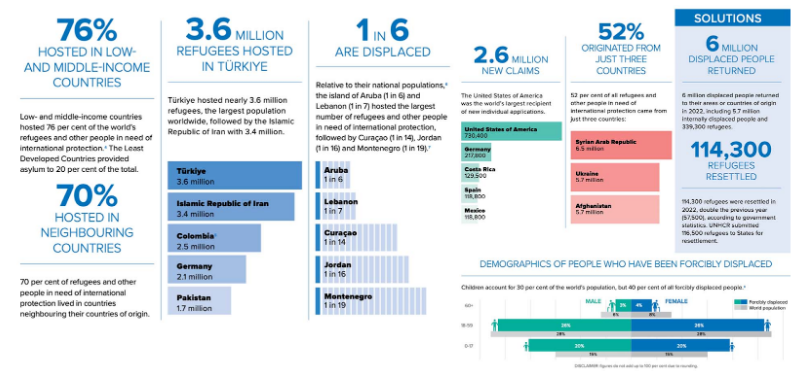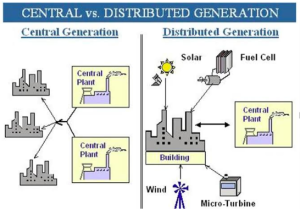Context:
| Probable Question:
Q. What are various challenges associated with hygiene and sanitation in India. Discuss various measures launched by the government to deal with them. (250 words) |
Key Findings from the report:
Right to Water and Sanitation:
|
Roadmap suggested by the report:
Status of Health and Hygiene in India:
Challenges associated with Health and Hygiene:
Current Measures by India to improve sanitation and hygiene:
Way Forward for India:
News Source: Financial Express
Recently, the United Nations High Commissioner for Refugees (UNHCR) released the “Global Trends: Forced Displacement in 2022″ report.
| Probable Mains Question
Q. Discuss the main causes and consequences of this unprecedented rise in forced displacement and suggest some measures to address the humanitarian and security challenges posed by it. |
Highlights of Report:

|
Way Forward
Conclusion
| Related Information
United Nations High Commissioner for Refugees (UNHCR)?
United Nations Refugee Convention 1951
India and Refugee
Global Compact on Refugees (GCR), 2018.
UK-Rwanda Asylum Plan
|
News Source: UNHCR Report
Context: Recently, Telecom Regulatory Authority of India (TRAI) released a set of recommendations to govern development of artificial intelligence (AI) across sectors.
Important Highlight of Recommendations
About Telecom Regulatory Authority of India (TRAI)
About Artificial intelligence
|
News Source: Livemint
Context:
India is considering expanding its solar STAR-C initiative, run by the International Solar Alliance(ISA), to a number of Pacific Island countries.
About STAR-C Initiative:
| Additional Information:
About International Solar Alliance (ISA):
|
News Source: Livemint
Context:
The opening day of the Monsoon Session of Parliament was disrupted after the government and the Opposition differed on the format of the discussion on the Manipur situation.
What is Rule 267, and Rule 176?
| Rule 267 | Rule 176 |
|
|
News Source: The Indian Express
Context- Coal Ministry bags “Best Engagement” Award for Procurement through GeM Portal.
More about the news:
About GeM portal
Let’s Define:
|
Significance of GeM portal:
News Source: pib
Context-Recently the amount of 466 lakhs, which was collected as GST during the last 3 years was reimbursed to Charitable/Religious Institutions.
About the Seva Bhoj Scheme:
Type of Assistance under the scheme:
News Source:pib
Quantum of Assistance-Financial Assistance in the form of reimbursement shall be provided where the institution has already paid GST on all or any of the raw food items listed below :
|
|
Image credits:Newsflicks Source:Britannica |
| 2. Katchatheevu Island
|
Image credits-Newswire Source:pib |
Context:
What is Distributed Energy?

News Source: pib
<div class="new-fform">
</div>